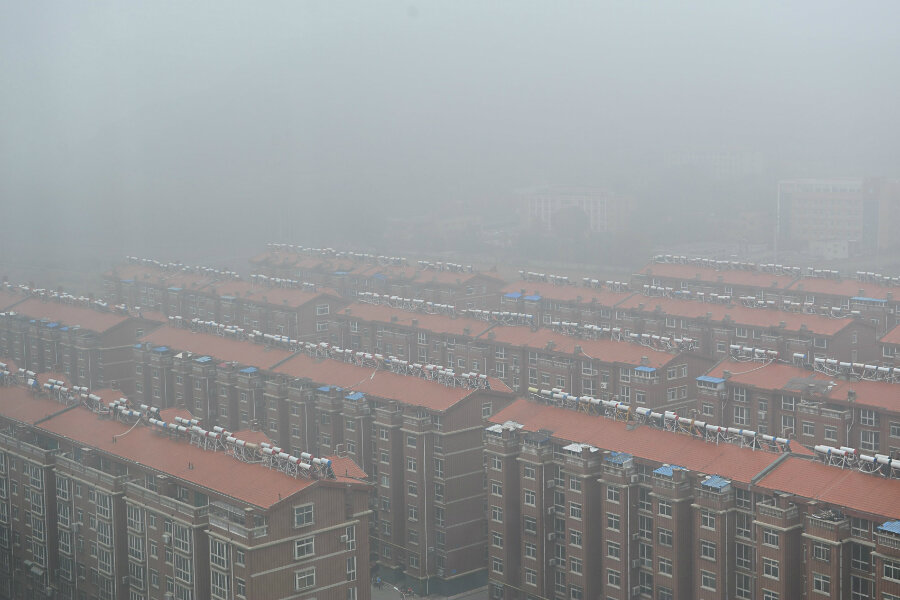As smog reaches record levels, what steps is China taking?
Loading...
Air pollution has soared to dangerous levels in some parts of China, reaching 50 times safety levels recommended by the World Health Organization (WHO).
Images show smog so thick that buildings in Jinan, Shandong province in the northeast, are nearly invisible.
In Shenyang, Liaoning province, which is home to 8.1 million people, levels of the most dangerous airborne particulates PM2.5 reached 1,400 – 56 times the recommended levels set by the WHO. The WHO’s recommended maximum is an average of 25 micrograms over a 24-hour period.
Air pollution in China is worst in the winter, due to a combination of coal being burned to heat homes and weather conditions that keep dirty air closer to the ground.
"Many cities in China, including the northeastern provinces, use coal as the major heat generator, which pushes up air pollution levels," said Zhang Bin, an official with Changchun city environmental protection department, according to state news agency Xinhua.
The smog crisis has been linked to the deaths of an average of 4,000 people in the country per day. That’s about 1.6 million every year, or 17 percent of all deaths in the nation.
In July, the Chinese capital of Beijing was chosen to host the 2022 Winter Olympics by the International Olympic Committee (IOC), defying concerns about its air quality.
But as China drummed up support at home to host the Olympics, activist groups called on the IOC to reject the Chinese bid over its toxic air pollution.
In the final days of the campaign, Beijing’s Mayor Wang Anshun gave assurances that major steps had been taken since his city hosted the 2008 Summer Olympics, with a series of coal power plants closed as part of an initiative to bring back the city's blue skies and white clouds. “All our efforts are moving Beijing towards a clean-energy future,” Mr. Wang said.
Indeed, in recent years, Chinese authorities have announced major plans to clean up its carbon-heavy energy supply, as The Christian Science Monitor reported earlier this year:
In January, a new environmental protection law took effect that imposes heavy fines on polluters. Since then, companies have been fined $18.3 million in 160 cases, China Daily reported in June. In addition, 1,186 companies were shut down entirely, 698 cases resulted in limitations or suspensions on production, 437 cases led to administrative detention, and 429 were charged with environmental crimes, according to the Ministry of Environmental Protection.
Beijing is set to close its last coal-fired generators by 2017 and build four gas-fired power and heating plants by next year, say officials.
China has been also investing heavily in solar power. In 2013, it installed a record 12 gigawatts of solar power. In 2014 the country added another 12 gigawatts of solar power, narrowly missing its goal of 14 gigawatts.
In March, Beijing promised to install as much as 17.8 gigawatts of solar projects in 2015. By comparison, the US added 7.3 gigawatts of solar capacity in 2014.
Despite the current smog crisis, there are signs that China is making progress in addressing its severe air pollution. Last year, the country's carbon dioxide emissions declined for the first time in more than a decade. Total carbon emissions dropped two percent in 2014 from the previous year.








